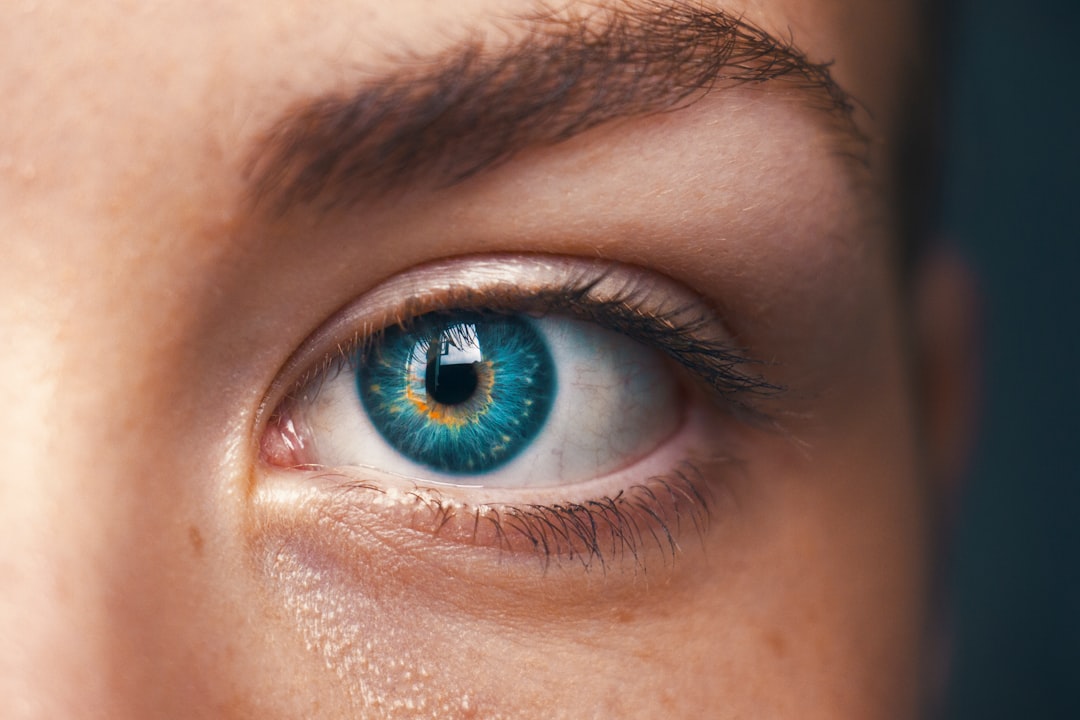How Can Eye Color Change With Mood?
It is possible for eye color to change over time. To understand this phenomena, look at the factors that contribute to eye color.

Introduction
Eye color does not actually change with mood. What does change is the way light reflects off the iris, creating the impression that the color of the eye has changed.
To understand this phenomena, look at the factors that contribute to eye color and affect the quality of light reflected.

Iris Composition
The iris is located between the cornea and the lens of the eye. It’s made up of the endothelial, stroma and epithelial layers. The iris is also divided into anterior and posterior compartments. The anterior compartment lies against the cornea, and the posterior compartment lies against the lens. Eye color is determined by the amount of pigment present in the iris. The pigments melanin and lipochrome are the major contributors to eye color. Melanin produces black and brown effects, and lipochrome produces yellowish effects.
How the Eye Reflects Light
Light appears white but is actually made up of bands of color in the ultraviolet spectrum. Bands of ultraviolet light vary in length, with red light producing the longest bands and blue light producing the shortest bands. As light hits the iris, the concentration of pigments determines the appearance of eye color. When high concentrations of melanin are present, the iris absorbs the light and the eyes appear to be brown or black. If high levels of lipochrome are present, the iris absorbs some of the longer bands of light, while shorter bands reflect off the lighter pigment and the eyes appear green or hazel. Low levels of both lipochrome and melanin cause almost all of the bands to be absorbed by the epithelium, allowing only blue light to reflect. As a result, the eyes appear blue or gray. An absolute lack of pigment reveals the blood vessels within the iris, causing the eye to appear pink.
Several factors determine how the eye reflects light including whether the light is natural or artificial, time of day, atmospheric conditions, clothing and eye makeup. The muscles within the eye and the muscles of facial expression are also factors.

The Pupils
The iris is made up of flexible bands that expand and contract to adjust the amount of light that reaches the retina. While light affects the retina, mood also affects retinal contraction. Under stress, the retina contracts, making the pupil smaller and revealing more of the iris to light. In lighter eyes, or eyes that reflect more light, this can cause the eyes to appear to change color.
The Facial Muscles
The face constantly makes voluntary and involuntary expressions. During changes in mood, the muscles around the eye contract or relax, which changes the shape of the eye opening. While some of these changes are very small, even minute changes affect the amount and angle of the light hitting the eye. These small effects change the way light is reflected, and in some instances, the eyes appear to change color.
Actual Color Change
It is possible for eye color to change over time. Many Caucasian babies are born with "neutral" eye color. Over time, exposure to light activates the pigments within the eye, causing the eyes to darken. This is why many people have blue eyes as babies or young children but darker eyes when they are older. Temporary and instantaneous eye changes, however, are usually an optical illusion, directly related to light reflection.

Read next: The Shape Of Your Nose Reveals A Lot About Your Personality
Source: this article was originally written By Julia Michelle (updated July 27, 2017) and published on healthfully.com
About the Author
Julia Michelle has been writing professionally since January 2009. Her specialties include massage therapy, computer tech support, land and aquatic personal training, aquatic group fitness and Reiki. She has an Associate in Applied Science from Cincinnati State Technical and Community College in integrative medical massage therapy.
Please Note: this article has been re-posted without prior written consent by the original Author. Link to the original article and site can be found above this disclaimer. If you are the Author of this post and you think that we are not re-posting it under the realm of 'fair-use', please contact us earthangelshouse@gmail.com
